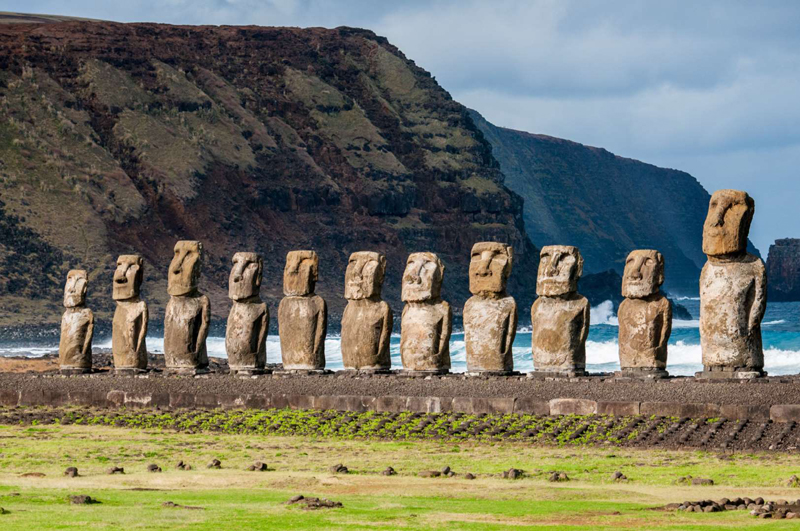 |
| © Image Source/Getty Images Moai statues, rano raraku, easter island, polynesia |
By Paul G. Bahn, Cricket Media
Just what do these stone-cold faces represent?
On Easter Island, an incredibly remote speck of land lost in the South Pacific, prehistoric settlers from eastern Polynesia carved the now-famous, huge stone statues, known as moai. Over a period of about 500 years, from about a.d. 1000 to 1500, hundreds of these statues were sculpted from tuff, a soft volcanic rock, with stone picks. We do not know exactly how many were created, because dozens are probably hidden under sediments piled up around the slopes of the quarry, but more than 880 are known at present.
The statues are all similar, but no two are absolutely identical. Each one is a human figure, from the head down to the abdomen. The arms are held tightly at the sides, while the hands, with long tapering fingers, are almost touching on the abdomen. Under an overhanging brow, the nose is long and straight or concave, the chin is prominent and pointed, and the ear lobes are often long. Most of the moai are thought to be male, according to the islanders’ testimonies.
 |
| © RachelKramer/Getty Images Moai statues on Easter Island. |
You Little “Stinker”
More than 230 of these great figures were transported to stone platforms around the island and raised onto them, with their backs to the sea. They then had eye sockets carved, so that eyes of white coral could be inserted at times. Some also had cylindrical headdresses of red stone placed on top of them. But what did they represent? In 1774, the English explorer Captain James Cook and his party heard the term ariki (“chief”) applied to some, while others had nicknames such as “Twisted Neck,” “Tattooed One,” and even “Stinker.” It is known that the statues represented high-ranking ancestors and often acted both as their funerary monuments and as a way to keep their memory alive. On the platforms around the coast, they served as a reassuring and protective border between two worlds: “home” and “out there.” On this tiny, remote island the feeling of being alone and cut off from the outside world must have been overpowering.
Is Mr. Big
The statues on platforms range from 6 to 33 feet tall, with the heaviest weighing 82 tons. In the quarry, there still lies the largest statue ever carved on the island. Nicknamed El Gigante (Spanish for “The Giant”), it is a monstrous 65 feet high and weighs up to 270 tons. Even if the prehistoric islanders had not run out of trees—and hence of rollers, levers, and rope needed for their stone-carving activities—it is unlikely that they could have moved El Gigante. Its very existence, therefore, is one more of the many unsolved puzzles of this extraordinary island.
 |
| © REUTERS/Carlos Barria Two tourists walk in front of "Moai" statues, near the town of Hanga Roa on Easter Island, October 20, 2003. |
























